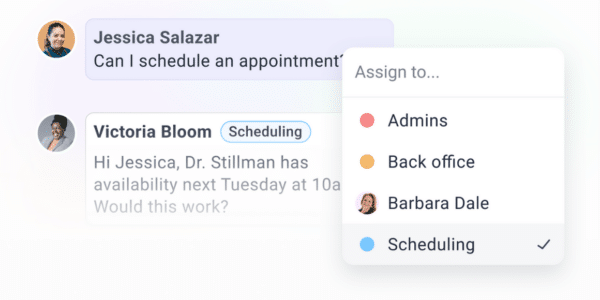Billing for services is not always easy in healthcare, so we went straight to the experts for some medical billing and coding tips and tricks so you can be sure you’re not leaving money on the table. Svast helps healthcare providers improve financial performance with certified billers, coders and best-in-class processes for revenue cycle management. Practices working with Svast have achieved a 15% sustained long-term increase in collections within the first 6 months. Read on to hear an expert take on how to improve your revenue cycle management from Alicia Clark, Director of Client Services at Svast.
Is your Medical Billing and Coding up to snuff? Here are some tips, tricks and metrics to pay attention to:
Medical Billing and Coding Tip #1:
Your percent of collections against charges (adjusted collection rate) should be appropriate for your specialty, geographic location, and payer mix. As an example: an Ob/Gyn practice on the east coast serving primarily Medicaid patients is not going to be collecting at the same percentage as an Ob/Gyn in NYC with commercial payers as their primary revenue source.
To calculate your percentage of collections against charges, divide collections received by charges made over a 12-month time frame and divide by 100. According to the American Academy of Family Physicians, if your adjusted collection rate is below 95%, you’re likely losing revenue and spending more time resubmitting denied claims. With Svast revenue cycle management, practices have seen adjusted collection rates as high as 99.7%.
Medical Billing and Coding Tip #2:
Always be aware of your aged trial balance (ATB), in other words, your list of outstanding claims in order of age. You should always strive to have eighty percent of your claims in the zero to thirty day bucket. In general, no claims should age beyond sixty days. Any claim aged beyond sixty days should have an explanation, like worker’s compensation claims which can take ninety days to process, or claims in appeals status which take extra time.
Medical Billing and Coding Tip #3:
Your first pass pay rate (also known as first pass resolution rate or FPRR) is the percentage of claims that are paid upon first submission. It is vital to submit “clean claims” with no errors in patient or insurance information. Claims with errors bounce at the clearing house level and require a correction before being resubmitted. Practices with high claim rejection/denial rates, therefore, have much slower revenue cycles. With Svast RCM, practices have seen a 12% average decrease in denial rates.
How can your practice streamline workflows to increase revenue?
Medical Billing and Coding Tip #4:
Fine tune internal processes and efficiencies at the front desk.
Simple steps taken when a patient checks in can actually play a big role in improving revenue cycle management. It’s important to set the expectation with patients up front that their co-pay, co-insurance and deductible are due at the time of the visit. This creates faster turnaround in payment collection and takes the onus off front desk staff to have to track down patients to pay their bill over the phone or by mail. It also establishes transparency and trust with patients right out of the gate.
Medical Billing and Coding Tip #5:
Eliminate coding errors.
Incorrect medical coding is one of the most common causes of revenue loss. It’s important to understand reimbursement and use the correct codes and modifiers to bill for your services in full. It’s common to see coding mistakes when patients have “oh by the way” visits, meaning they are evaluated for an additional issue on top of the reason for their visit. For example: a patient visits their primary care doc with a sore throat, but also asks them to look at their aching knee before they leave. Practices often make the mistake of billing for the two issues under the same visit, most often resulting in a denial of the bundle by the insurance company.
Certified coders can help recoup this revenue by appending a modifier onto the code to denote an additional service on the same day. This way, insurance companies will pay for both services separately. Using code modifiers not only creates a faster streamline of payment, but an overall increase in revenue.
Many practices are hesitant to change their revenue cycle management for fear that using new codes will make them more likely to be audited. Certified coders go through your coding with a fine-toothed comb to confirm it is accurate and no money is being left on the table. They not only make corrections and resubmit the claim to the insurance company, but they work to educate your staff on correct coding techniques.
Medical Billing and Coding Tip #6:
Send billing reminders by text.
You can increase revenue and improve payment turnaround by sending billing reminders and outstanding balances to patients with broadcast texting. This saves your billing staff time that they would normally spend calling, leaving voicemails, and mailing paper billing statements. Texting has much higher engagement than traditional phone call reminders. Only 19% of calls from an unknown number are answered, while 98% of text messages are read and 93% are read within the first three minutes.
Unlike calling and mailing, texting allows for faster billing turnaround because you can include a link directly to the payment portal. Patients are much more likely to tap the link, curious about their outstanding balance, than they are to call back about a voicemail or return payment by mail. Plus, sending billing reminders by text helps cut down on paper costs by opening the door to paperless billing.
In this digital age, patients, like all consumers, seek instant gratification. Bill pay through text gives them a quick and easy way to handle payments and cuts out the discomfort of discussing payment with the office over the phone.
Improve your Revenue Cycle Management with OhMD
These high level medical billing and coding tips and tricks should give you a sense of some opportunities to improve your organization’s revenue stream.
OhMD is partnering with Svast to offer revenue cycle management to our community members. Svast has a team of certified coders and billers who help streamline practice workflows to increase revenue right out of the gate. They offer specialty-specific support for your current in-house billing and practice management teams to increase annual revenue through improved billing and coding processes.
Svast can help your practice achieve a 15% sustained increase in revenue in under 6 months. They assess your baseline, estimate your potential for improvement with collections, and construct an RCM strategy to suit your practice and specialty. If you want to learn where your organization stands with revenue cycle management, let’s set up some time to talk!
Hear what Svast customers have to say about their revenue cycle management skills:


